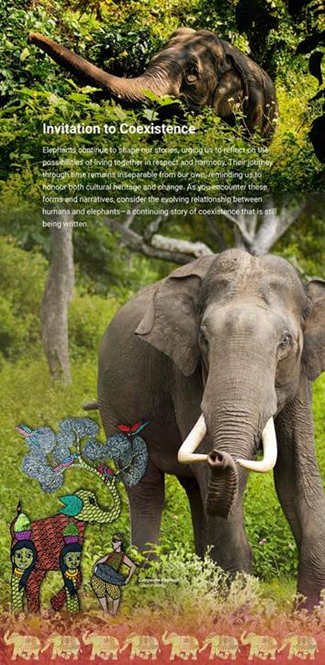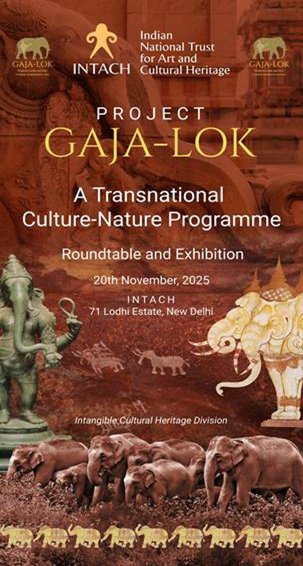Indian Society & Social Justice
Vishanu Sankraman Pratirodh Abhyas:
-
- A national mock drill titled “Vishanu Sankraman Pratirodh Abhyas” was conducted in Khandwa District, Madhya Pradesh during 2–5 November 2025 to test India’s preparedness for a zoonotic outbreak of Crimean‑Congo Hemorrhagic Fever involving humans and animals.
- The exercise was organised under the National One Health Mission (NOHM) and led by the National Joint Outbreak Response Team (NJORT), involving multi‑sectoral agencies from human health, veterinary, wildlife, environment, and agriculture sectors.
- Key agencies included: National Centre for Disease Control (NCDC), Indian Council of Medical Research (ICMR), National Institute of Virology (NIV) Pune, Indian Council of Agricultural Research (ICAR), State Veterinary & Forest Departments, and other district/state leadership.
- The drill aimed to evaluate real‑time simulation of outbreak investigation, pathogen identification, coordination across sectors, and containment strategies, with independent observers documenting strengths and areas for improvement.
(PIB)
Geography, Mapping, Ecology & Environment
Asian elephant:
-
- Context: Indian National Trust for Art and Cultural Heritage (INTACH) is launching “Gaja‑Lok: Elephant Lands and their Cultural Symbolism in Asia”, a transnational culture‑nature programme centred on the Asian elephant.

-
- Distribution: Found in South and Southeast Asia – India, Sri Lanka, Nepal, Bhutan, Bangladesh, Myanmar, Thailand, Malaysia, Laos, Cambodia, Vietnam, and Indonesia (Sumatra). India holds ~60% of the global population.
- Habitat: Prefers tropical moist forests, grasslands, and scrublands; requires large home ranges for foraging and movement.
- Conservation Status:
- IUCN: Endangered
- CITES: Appendix I
- Wildlife Protection Act 1972 (India): Schedule I species
- Ecological Role: Acts as a keystone species; aids in seed dispersal and maintaining forest ecosystem balance.
- Threats: Habitat loss and fragmentation, human–elephant conflict, poaching for ivory (especially calves in Southeast Asia), and road/railway accidents.
- Cultural Significance: Symbolic in Indian culture and religion; represented in festivals, art, and folklore.
- Conservation Efforts in India: Project Elephant (1992), Elephant Corridors, Eco-sensitive zones, and conflict mitigation strategies.
(PIB)
Science & Technology
ISRO tests bootstrap mode start on CE20 cryogenic engine:
-
- ISRO has successfully demonstrated the bootstrap mode start test on the CE20 cryogenic engine which powers the upper stage of the Launch Vehicle Mark-3 (LVM3) rocket.
- Conducted under vacuum conditions in the High-Altitude Test (HAT) facility at ISRO Propulsion Complex, Mahendragiri.

(TH)
Century-long data of Kodaikanal Observatory reveals clues to Sun’s future:
-
- Researchers from Aryabhatta Research Institute of Observational Sciences (ARIES), together with international partners, have used more than 100 years of archival solar-chromosphere images from the Kodaikanal Solar Observatory (KoSO) to reconstruct the Sun’s polar magnetic field behaviour over the past century.
- Direct measurements of the Sun’s polar magnetic fields have existed only since the 1970s, so this historical reconstruction fills a major data gap.
- The method involved digitizing Ca II K‐wavelength observations (from as early as 1904) and identifying tiny bright features near the Sun’s poles (the “polar network”) via advanced algorithms, which serve as a proxy for polar field strength.
- This extended time‐series of solar polar field data helps in forecasting solar activity (e.g., for solar cycle 25) and thus has implications for satellite operations, power grids, communications and other Earth‐based systems vulnerable to solar storms.
- The dataset (reconstructed polar‐field data and Polar Network Index) has been made freely available publicly, enabling further research globally.
(PIB)
India’s first indigenous “CRISPR” based gene therapy for Sickle Cell Disease:
-
- India’s first indigenous CRISPR‐based gene therapy for Sickle Cell Disease has been launched.
- The therapy is named “BIRSA 101”, dedicated to Bhagwan Birsa Munda.
- It especially targets tribal populations, where sickle cell disease has a significant prevalence.
- The initiative aligns with the vision of a “Sickle Cell Disease‑Free India by 2047” and pushes India’s ambitions in affordable, frontline medical technologies.
- A technology‐transfer agreement has been signed between Serum Institute of India and research institutes (CSIR‑IGIB, (Institute of Genomics & Integrative Biology)) to scale and deliver the therapy affordably.
(PIB)
History, Art & Culture
INTACH to launch Gaja-Lok:
-
- Indian National Trust for Art and Cultural Heritage (INTACH) is launching “Gaja‑Lok: Elephant Lands and their Cultural Symbolism in Asia”, a transnational culture‑nature programme centred on the Asian elephant.
- The initiative will document and explore the elephant’s role across culture, history, ecology and climate resilience in elephant‑range countries of Asia.
- It brings together art, environment, scholarship and international partnerships, positioning the elephant as both a cultural icon and an emblem of ecological stewardship.

(PIB)
Government Schemes
Swachh Bharat Mission:
-
- Context: World Toilet Day is observed every year on 19 Novemberto raise awareness about the global sanitation crisis and the importance of safe toilets for all.
- Supports Sustainable Development Goal 6: Clean Water and Sanitation, aiming for universal access by 2030.
- Announced on 2nd October 2014 (on the 150th birth anniversary of Mahatma Gandhi), the mission aimed to eliminate open defecation and improve solid and liquid waste management.
- SBM has two major arms:
- Swachh Bharat Mission (Gramin) (SBM-G) – rural sanitation, under the Ministry of Jal Shakti.
- Swachh Bharat Mission (Urban) (SBM-U) – urban sanitation & waste‐management, under the Ministry of Housing and Urban Affairs.
- Under this initiative in October 2019, all villages, districts, and states were declared Open Defecation Free (ODF).
- Phase I focused on infrastructure (toilet construction, declaration of ODF).
- The outcomes of SBM Phase I:
- Health Gains: WHO estimated 300,000 fewer diarrheal deaths in 2019 versus 2014, linked to improved sanitation.
- Economic Savings: Households in ODF villages reduced health-related expenses by nearly INR 50,000 each year.
- Environmental Protection: ODF regions recorded notable declines in groundwater pollution levels.
- Women’s Safety and Dignity: With expanded toilet access, 93% of women expressed feeling safer within their homes.
- Phase II (for SBM-G, from 2020) emphasises sustainability, solid & liquid waste management, advancing villages to “ODF Plus” status.
- ODF Plus Villages climbed to 5,67,708 showcasing 467% growth.
- 4692 Cities have ODF status as of November 2025.
- Over 5,67,708 villages have attained ODF Plus status (growth of ~467 % from ~1 lakh in December 2022).
- In urban sanitation: 4,692 cities declared ODF; 4,314 have achieved ODF +; 1,973 have reached ODF ++
- Household latrine construction:g., in urban component, individual household latrines achieved 108.62 % of target; public/community toilets achieved 125.46 %.

(PIB)
Pradhan Mantri Kisan Samman Nidhi (PM-KISAN) scheme:
-
- Context: 21st instalment delivers ₹18,000 crore to 9 crore farmers through seamless Direct Benefit Transfer.
- It is a Central Sector Scheme (100% Central funding) launched on 24 February 2019 to provide income support to eligible land-holding farmer families.
- It supplements the financial needs of small and marginal farmers and helps them meet inputs; sowing/harvest needs and avoid debt traps.
- Financial Benefit & Delivery Mechanism:
- Provides ₹6,000 per year to each eligible farmer family, paid in three equal instalments (₹2,000 each) directly into Aadhaar-seeded bank accounts via Direct Benefit Transfer (DBT).
- Cumulative: Over ₹3.70 lakh crore disbursed to over 11 crore farmer-families.
- Eligibility & Target Group:
- Applicable to all land-holding farmer families with cultivable land holdings in their name; mandatory registration, bank account number, IFSC, mobile number, Aadhaar number etc.
- A strong focus on small and marginal farmers (who own less than two hectares), for over 85% of such farmers the scheme acts as a key support.
- Significance & Features:
- One of the largest DBT initiatives globally in terms of number of beneficiaries and scale.
- Digital infrastructure: Aadhaar-eKYC, digital land record seeding, PM-KISAN portal, mobile app, and AI chatbot (“Kisan-eMitra”) to enhance transparency, registration and grievance redressal.
- Over 25 % of benefits designated for women beneficiaries, ensuring gender inclusivity.
- Facility of self-registration and state/UT-level drives to clear pending cases; saturation drive added over 1 crore eligible farmers.

(PIB)
Atal Mission for Rejuvenation and Urban Transformation (AMRUT):
-
- Launched on 25 June 2015 by the Ministry of Housing and Urban Affairs.
- Objective: To provide basic urban infrastructure services, especially water supply, sewerage, urban transport, and green spaces, to improve quality of life in cities.
- Focus Areas:
- Universal water supply (tap water connections)
- Sewage connections and sewerage management
- Urban transport (pedestrian, non-motorized transport, public transport)
- Green spaces & parks
- Funding Pattern:
- Centrally Sponsored Scheme with 50:50 sharing between Centre and States.
- Urban local bodies (ULBs) implement projects.
- Key Features:
- Focus on ‘service delivery’ rather than only infrastructure creation.
- Encourages reforms in urban governance, including e-governance, property tax reforms, and capacity building.
- Covers 500 cities across India in the first phase.
- Significance:
- Improves water access and sanitation, reduces urban health hazards.
- Linked with Swachh Bharat Mission (Urban) and Smart Cities Mission for integrated urban development.
(PIB)
Jal Jeevan Mission:
-
- It launched in August 2019.
- To provide Functional Household Tap Connection (FHTC) to every rural household by ensuring 55 litres per capita per day (lpcd) of safe drinking water.
- Implemented by the Ministry of Jal Shakti, under the Department of Drinking Water & Sanitation (DDWS).
- Centrally Sponsored Scheme with fund-sharing:
- 50:50 (Centre:State) for most states
- 90:10 for NE states & Himalayan states
- 100% for UTs.
- Village-level Community Water Committees (VWSCs) formed to plan, manage & maintain water supply systems.
- Use of IoT-based sensors, SCADA systems, GIS mapping for real-time monitoring.
- JJM dashboard used for transparency and progress tracking.
- Village Action Plans (VAPs) prepared for all villages under a bottom-up approach.
(TH)
PRACTICE MCQ’S
Q1. With reference to the Swachh Bharat Mission (SBM), consider the following statements:
1. Under SBM (Gramin) Phase-II, a village is declared ODF Plus only when it sustains ODF status and has functional solid and liquid waste management systems.
2. Swachh Bharat Mission (Urban) is implemented by the Ministry of Jal Shakti.
3. SBM was launched with the primary objective of eliminating open defecation and promoting scientific management of municipal solid waste.
Which of the statements given above are correct?
a) 1 and 3 only
b) 1 and 2 only
c) 2 and 3 only
d) 1, 2 and 3
Answer: A
Explanation:
-
- As per recent PIB inputs, ODF Plus requires sustaining ODF status and having solid & liquid waste management.
- SBM-Urban is under the Ministry of Housing & Urban Affairs, not Jal Shakti.
- Eliminating open defecation and improving waste management were core objectives at launch.
Q2. With reference to the Pradhan Mantri Kisan Samman Nidhi (PM-KISAN) scheme, consider the following statements:
1. Under the latest reforms, Aadhaar-based e-KYC has been made mandatory for receiving instalments, and farmers can also complete e-KYC through facial authentication using a mobile app.
2. PM-KISAN is a Centrally Sponsored Scheme with cost-sharing between the Centre and States in a 60:40 ratio.
3. The scheme allows self-registration of farmers, and the government has introduced an AI-based assistant (“Kisan-eMitra”) to help farmers complete registration and grievance processes.
4. Tenant farmers and landless agricultural labourers are included within the definition of ‘eligible farmer families’ for PM-KISAN benefits.
Which of the statements given above are correct?
a) 1 and 3 only
b) 1, 2 and 4 only
c) 3 and 4 only
d) 1, 2, 3 and 4
Answer: A
Explanation:
-
- As per the latest PIB update (PRID 2191651), Aadhaar-based e-KYC is mandatory, and facial-authentication based e-KYC through a mobile app has been rolled out.
- PM-KISAN is a Central Sector Scheme, fully funded by the Government of India — no cost-sharing with States.
- The scheme includes self-registration and AI chatbot support (“Kisan-eMitra”) as per PIB.
- Only landholding farmer families are eligible. Tenant farmers, sharecroppers, and landless labourers are not included.
Q3. Which of the following is incorrect about the Jal Jeevan Mission (JJM)?
a) It aims to provide Functional Household Tap Connection (FHTC) to every rural household.
b) It has a service delivery norm of 55 litres per capita per day (lpcd) of safe drinking water.
c) It is implemented by the Ministry of Rural Development.
d) It is a Centrally Sponsored Scheme with 50:50 fund sharing for most states.
Answer: C
Explanation:
-
- JJM’s core goal is universal rural tap water supply.
- 55 lpcd is the official service standard.
- JJM is implemented by the Ministry of Jal Shakti, not the Ministry of Rural Development.
- JJM is a Centrally Sponsored Scheme with 50:50 Centre–State funding for most states.
Q4. With reference to Sickle Cell Disease in India, consider the following statements:
1. Sickle Cell Disease is caused by a bacterial infection prevalent among tribal populations.
2. Sickle Cell Disease affects only children below the age of 5.
Which of the statements given above is/are correct?
a) 1 only
b) 2 only
c) Both 1 and 2
d) Neither 1 nor 2
Answer: D
Explanation:
-
- Sickle Cell Disease is a genetic disorder, not caused by bacterial infection.
- Sickle Cell Disease is a genetic disorder affecting people of all ages, not just children under 5.
Q5. With reference to the Asian Elephant (Elephas maximus), consider the following statements:
1. India holds nearly 60% of the global population of Asian elephants.
2. The Asian elephant is listed under Schedule II of the Wildlife Protection Act, 1972.
3. Project Elephant was launched in India to address human–elephant conflict and ensure habitat protection.
Which of the statements given above are correct?
a) 1 and 3 only
b) 2 and 3 only
c) 1 and 2 only
d) 1, 2 and 3
Answer: A
Explanation:
-
- India has ~60% of the global Asian elephant population.
- Asian elephant is listed under Schedule I of the Wildlife Protection Act, 1972, not Schedule II.
- Project Elephant (1992) was launched to mitigate human–elephant conflict, protect elephants, and conserve their habitats.

